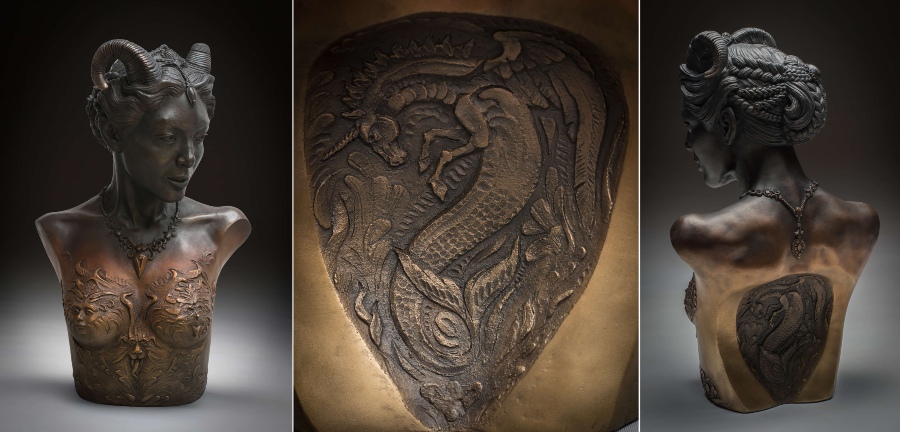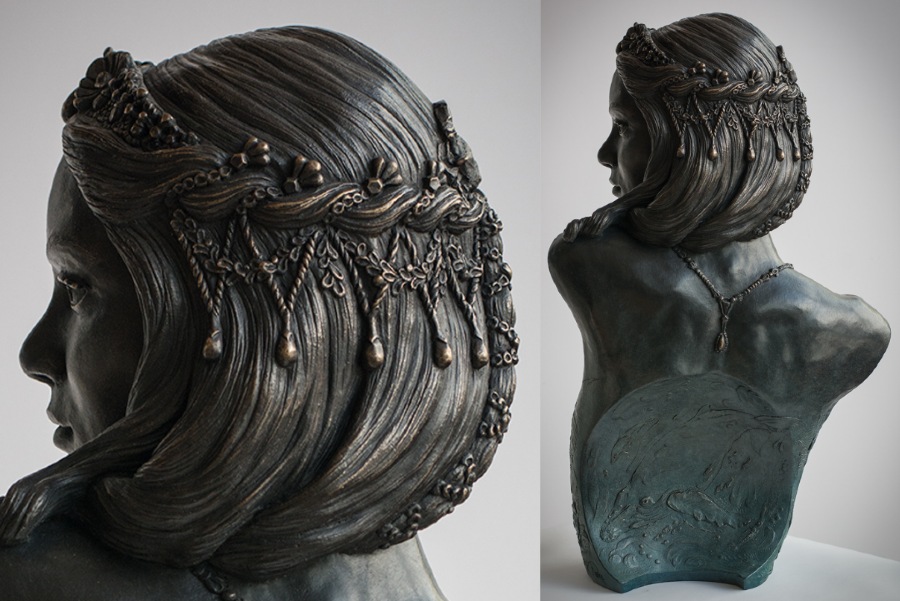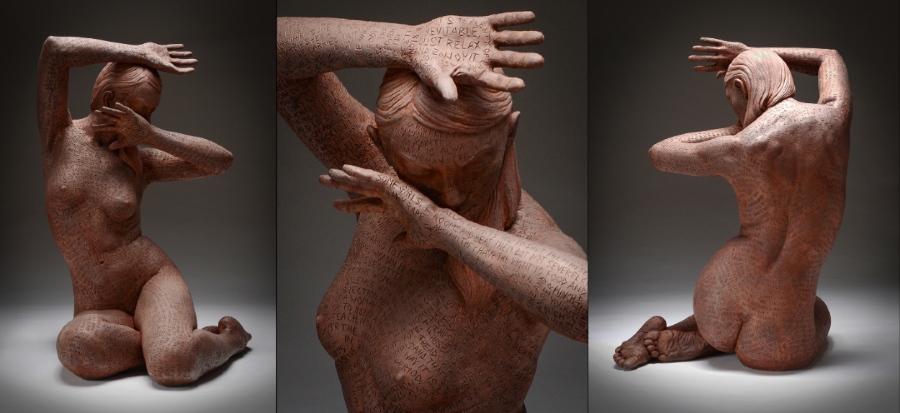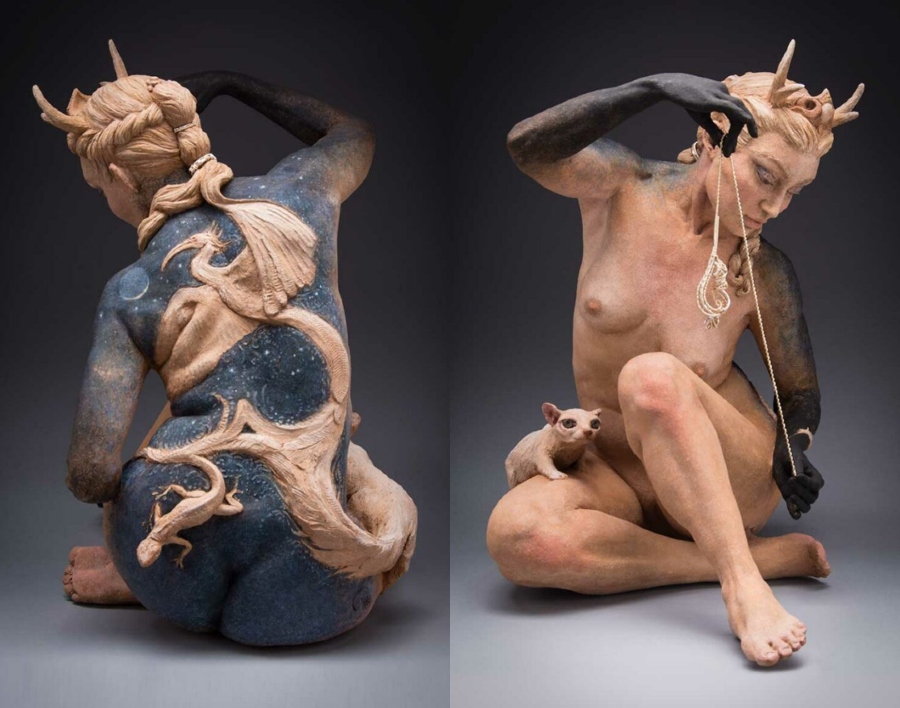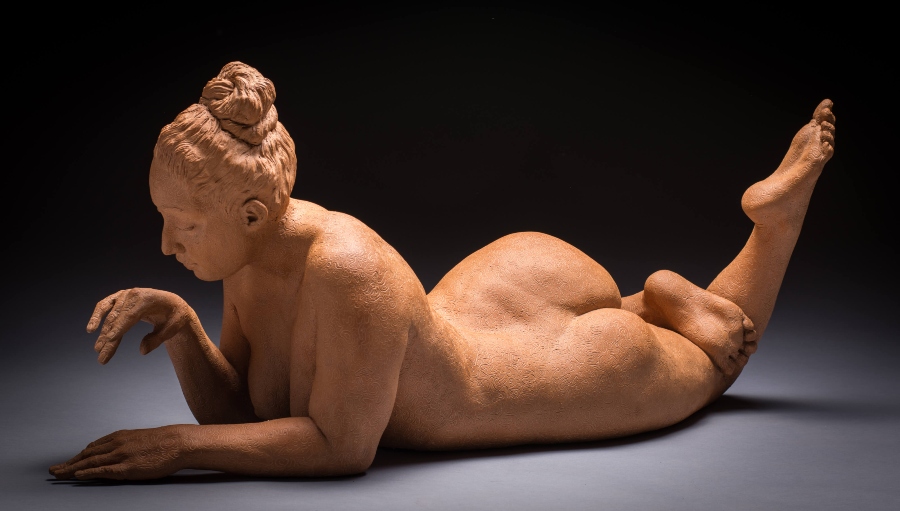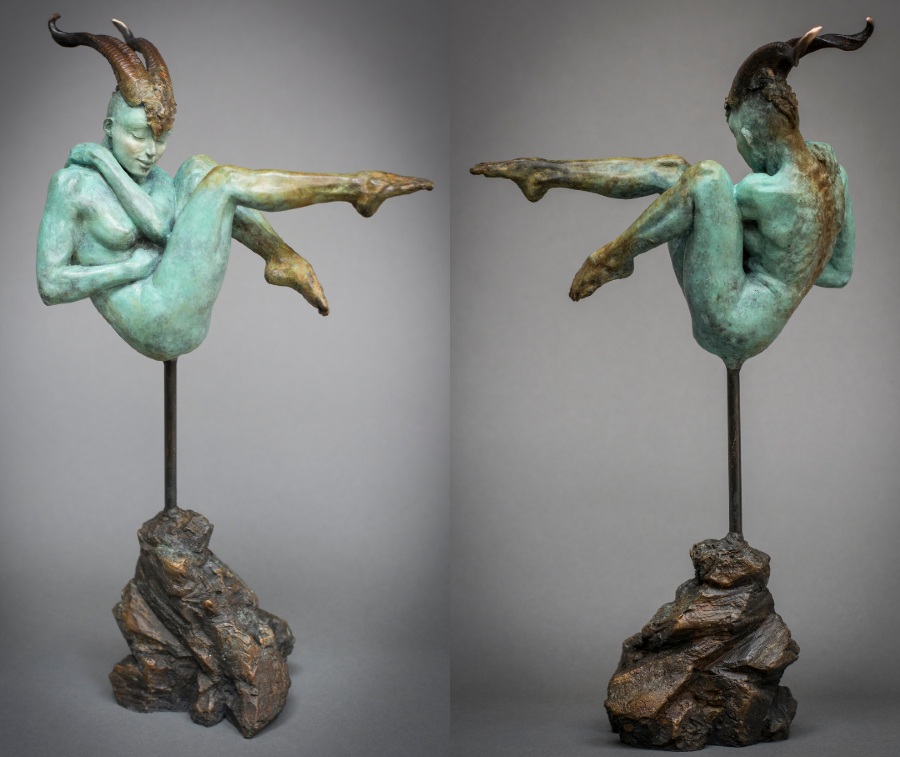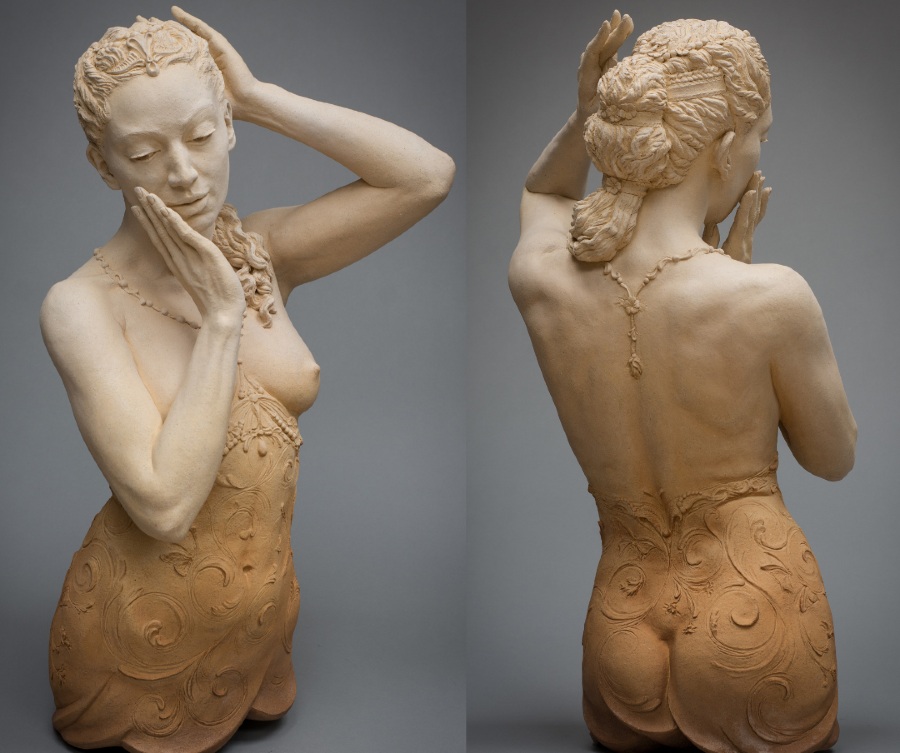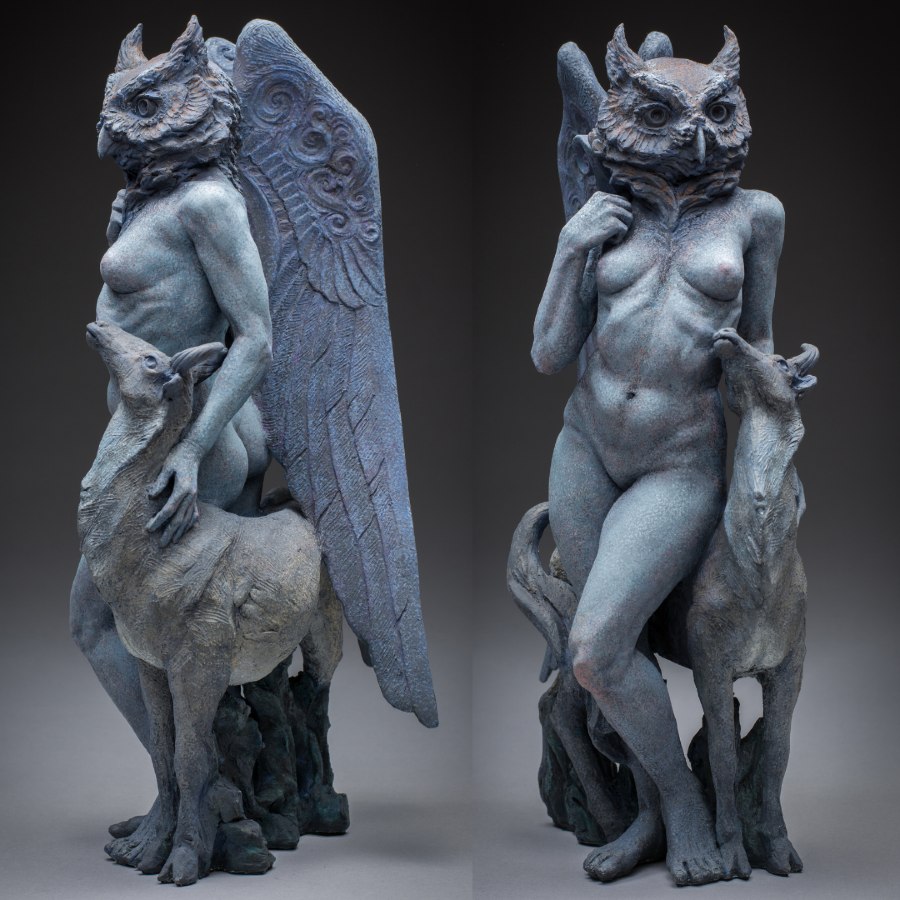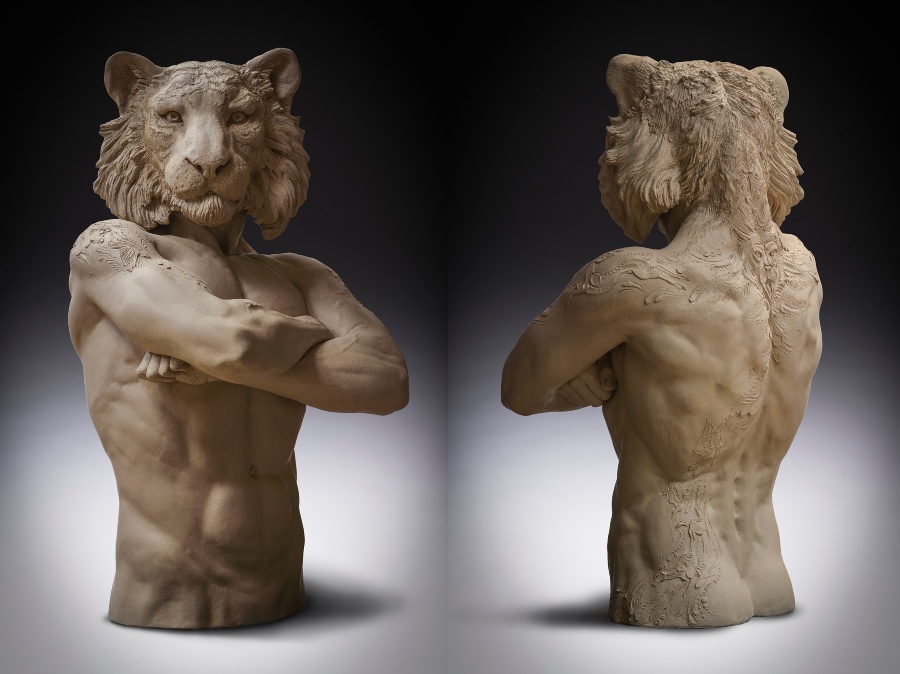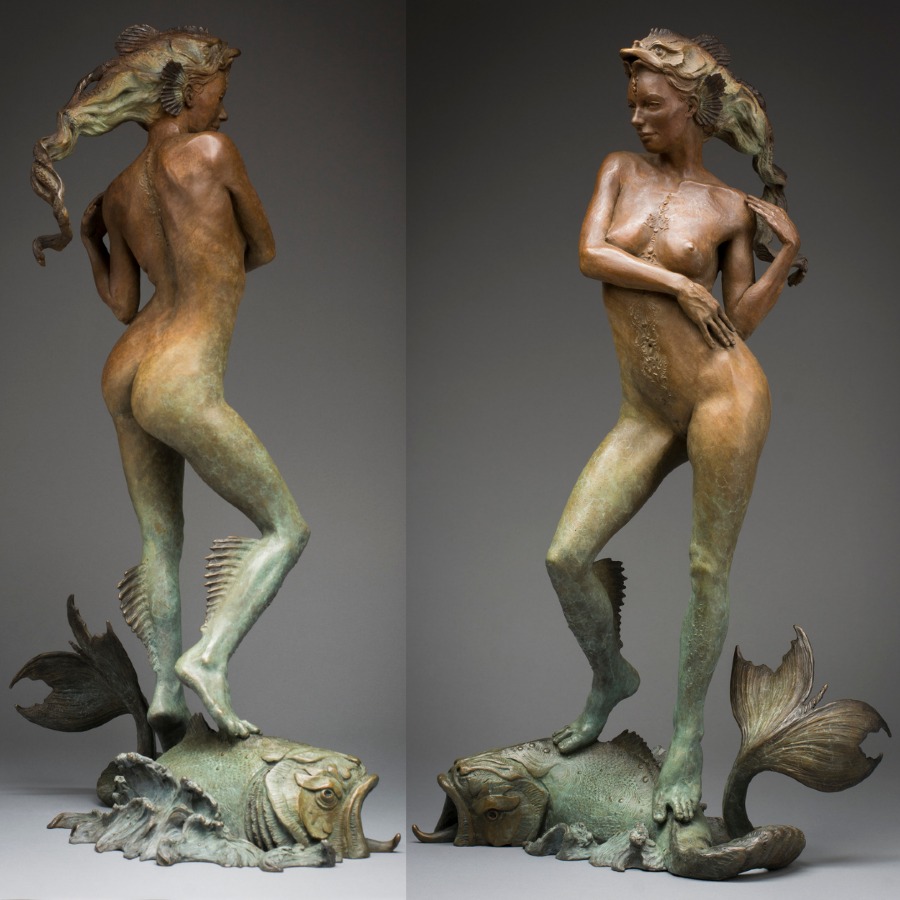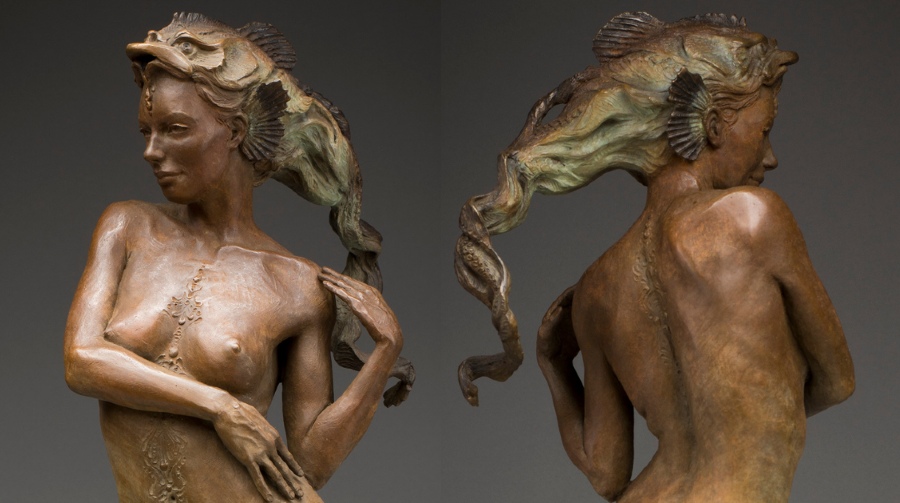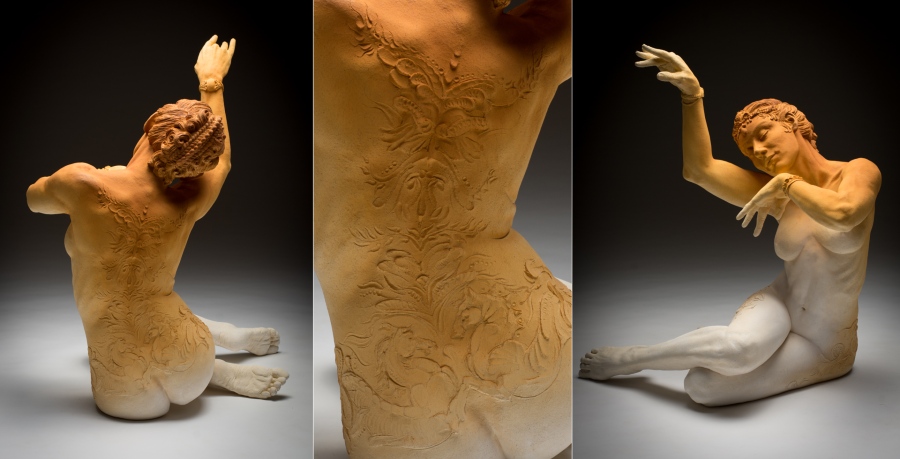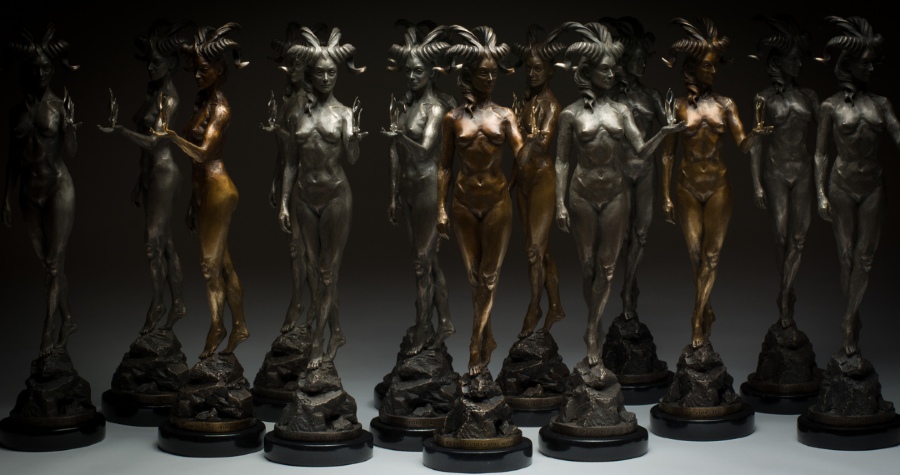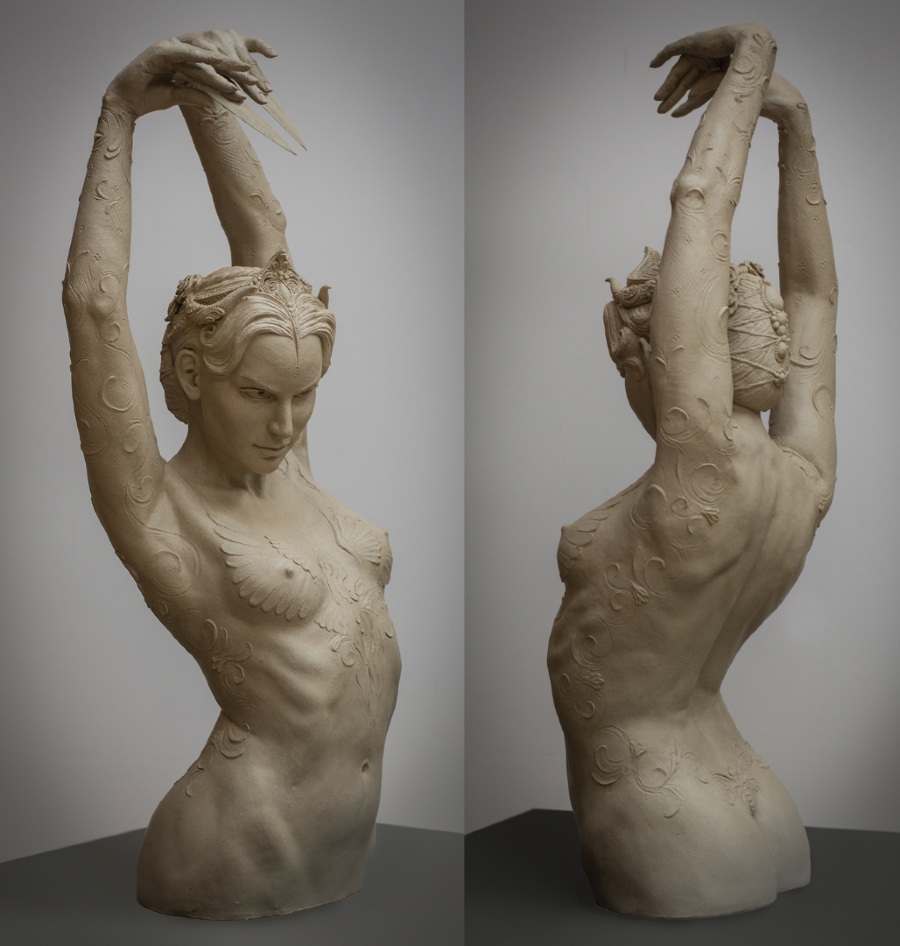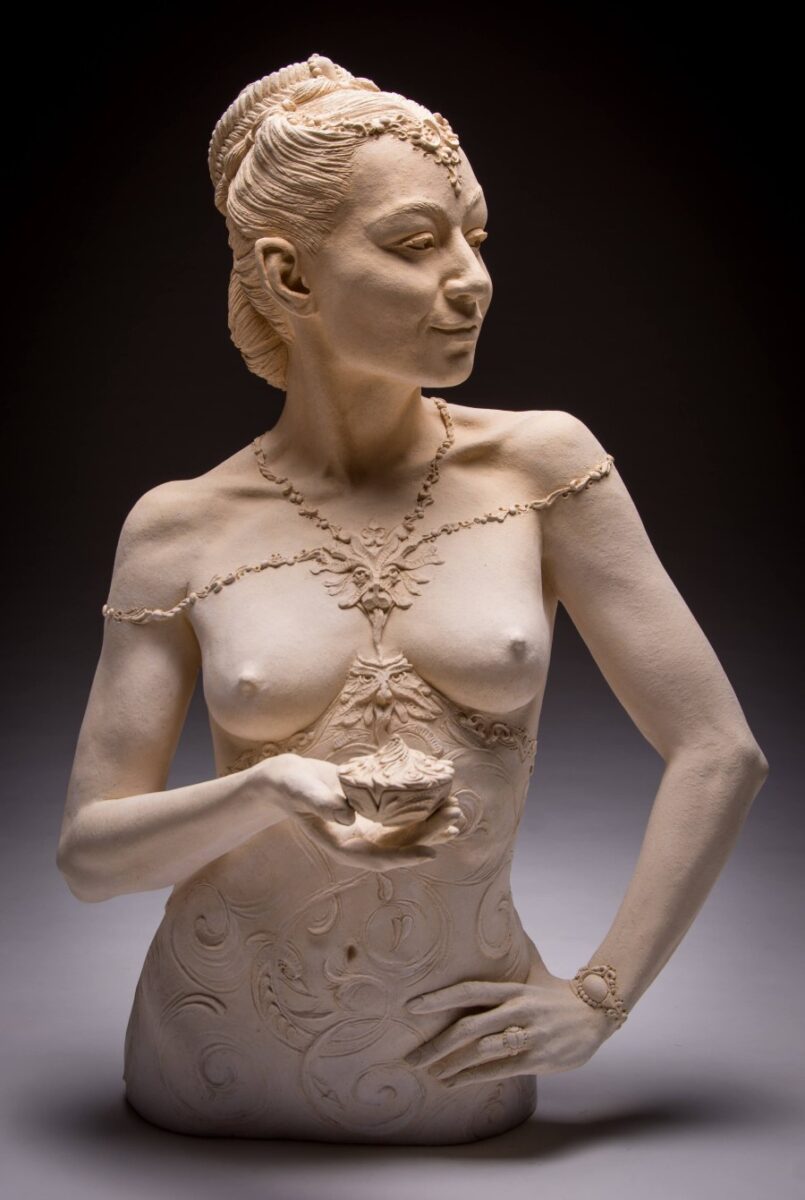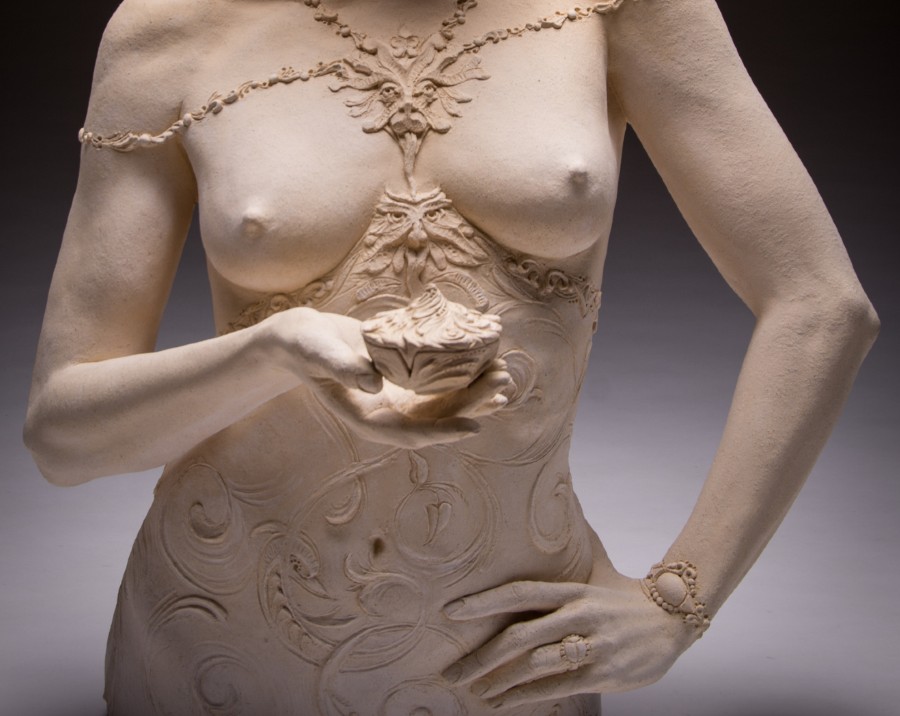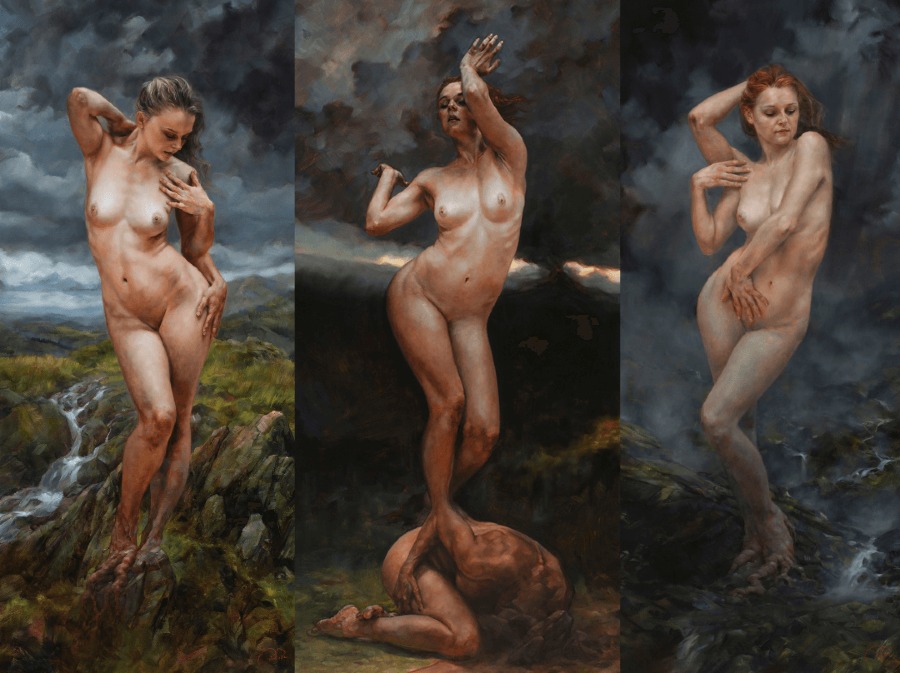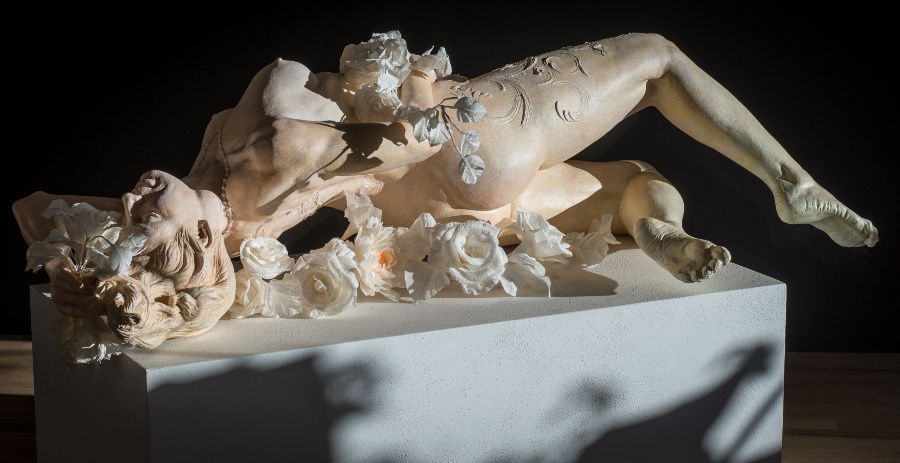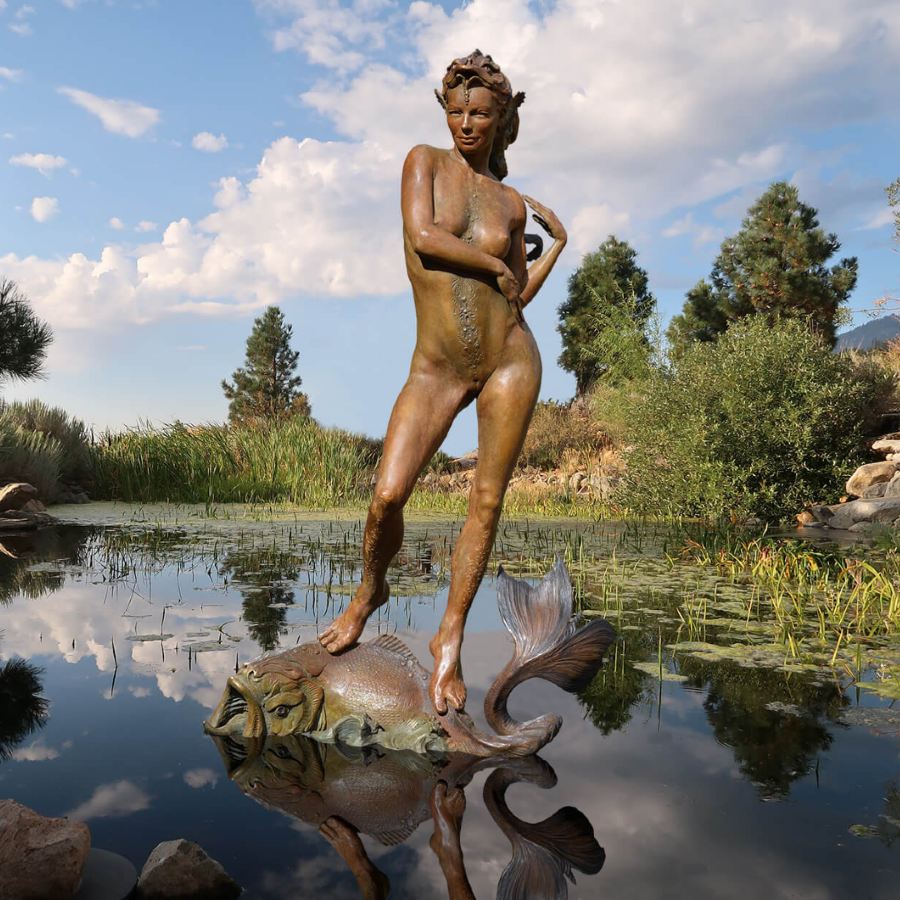Exclusive Interview with Colin and Kristine Poole, 1st Prize Winners, Yasha Young Projects Sculpture Award, 2020 Beautiful Bizarre Art Prize
Ask ten people what their idea of the perfect day is and the resulting cacophony of binge-watching recommendations will still get drowned out by the sound of Colin and Kristine Poole‘s creative energy melting down the power grid. That electrically charged popping noise is merely just the result of another wildly productive day for the partners in life, love, and artistic reverie. Yes, they are busy little beavers. Just LOOK at the diverse range of works illustrating this article! Bear in mind that what you are gazing at is not a wide-spanning career retrospective, however. It’s a relatively small cross-section of their overall creative oeuvre.
That’s when it hits the beholder, “They’ve produced this much sculptural beauty already? Surely they must be in their mid-80s and getting their affairs in order.” Nope. They are both very much alive and kicking, with many more decades ahead of them in which to further blow the roof off of their individual and collaborative portfolios. Hmmm-wow. Suddenly, our perfect weekend plans consisting of old episodes of Buffy the Vampire Slayer and power-lifted forkfuls of Nutella have lost their luster.
Usually, it takes creatives an entire lifetime to produce such an impressive body of work. So how, then, have Colin and Kristine been able to pull off this artistic feat of magic? Psst – it’s a lifestyle choice! Nothing will derail them from manifesting the creative privilege that the universe has generously bestowed upon them. They regard their life’s work – the very heart and soul of their purpose – as a great honor that must never be squandered. Every decision that Colin and Kristine make regarding what they bring forth this very day has, since the onset of their union, been grounded in discipline and relentless dream fulfillment. They simply just agreed to squeeze the creative marrow out of every waking moment – yes, even on weekends – and haven’t wavered since.
As it turns out, removing modern-day distractions that can compromise artistic productivity ends up significantly liberating one’s time. The muse, you’ll soon notice, boogies her heart out in every conceivable corner of your mind! That has certainly been the experience of Colin and Kristine, who were the 1st Prize Winners of Beautiful Bizarre’s 2020 Art Prize in the Yasha Young Projects Sculpture Award. We invite you into Colin Poole and Kristine Poole’s utterly inspiring world of soul-fulfilling, self-fulfilling artistic prophecy. If your creative spirit has suffered the slings and arrows of this challenging period in history, we hope that – by the end of this article – you will be swept up in an inspiring soul song that will reinvigorate your own practice.
I will never tire of watching a sculpture emerge from the formlessness of clay. Bringing something into being is what makes me feel most connected to who I am and what my purpose is.
– Kristine
Interview with Colin and Kristine Poole by Elizah Leigh
Congratulations, Kristine and Colin! Your collaborative piece, Spinner of Dreams, compelled our panel of judges to finally put a ring on it. What prompted you to give our competition another shot?
KRISTINE: Having judged many art competitions ourselves, we know that numerous factors influence the final results. Usually, a new jury is selected every year. That, of course, results in different preferences and outcomes. We feel very strongly that Beautiful Bizarre Magazine contributes hugely to the global art community and we want to do what we can to encourage that drive and energy. Part of championing the work of Beautiful Bizarre is to participate in the Art Prize competition each year.
For the past 8 years, your sculptures have landed you a notable array of awards and recognitions. Some might think that winning is all in a day’s work for the Pooles. What have you gained from this particular art competition experientially?
KRISTINE: Any time our work receives recognition is a big day for us! One of the peak artist experiences is the moment when something we have created resonates powerfully with someone else. The Beautiful Bizarre global art community is populated with an enormous array of crazy-talented artists. To have our work selected for recognition among those creatives is an incredible honor.
On top of that, Beautiful Bizarre does such an amazing job of promoting and supporting artists. The Art Prize takes this to entirely new levels. The significant financial prize and the sponsor gifts are wonderful enough. We also received a social media advertising package, feature interviews, and a beautiful hand-blown glass award! We were seriously gobsmacked.
You absolutely must follow the rule book. But wait a minute, the core creed of the artist is that there is no rulebook! That means we get to do what we want – woo hooooo!
– Colin
Would you mind sharing any new insight with your fellow creatives who are intrigued about the prospect of throwing their hat in the ring?
KRISTINE: For artists who are new to art competitions, there are many benefits to entering. It is an opportunity to look at your work critically and assess what you think is the strongest. It is a chance to refine the way that you photograph and present your work, especially if it’s a competition for publication. If you get in, it provides great exposure and promotion. Your work will come to be associated with the quality that fellow competing artists bring forth.
Many artists working right now don’t have the external deadlines of conventions and in-person shows. Competitions are a great way to ensure that you move your work forward, set goals and continually challenge yourself to achieve new and greater levels of technical and creative mastery.
The last time we chatted, you provided us with an in-depth explanation of how Spinner of Dreams came to be. You also touched on the fact that your clay figure is emblematic of one who is the architect of their own aspirations. While your magical lass might be regarded by some as a girl power totem, is she also giving a shout-out to all of the creatives in the house?
KRISTINE: Creatives are some of the most powerful people in the universe. We design the world around us that we all exist within. Artists are familiar with the blaze of creative focus and passion that enables us to take a deep dive into our work. Creatively approaching the business side of our life is critical, as well. Learning, adapting, and designing systems that work for us. As creatives, we need to apply the full force of our creative vigor to fashion a life that sustains, enlivens, and pushes us forward.
Beyond the notion of dream-setting and dream-achieving, seeing a curvaceous female depicted in such a prepossessing manner is just as empowering. Are you intentionally moving toward work that is more representative of the beautifully diverse aspects of the human figure?
KRISTINE: The human form is endlessly complex, fascinating, and expressive. We tend to select models based on their ability to bring life to the concept we’re working with rather than their particular form. That said, you can see works throughout our oeuvre that celebrate diverse shapes. One such example is Reflection: Questions at a Crossroads.
With us, everything has always developed organically. Blending our skill sets and combining our creative impulses is a natural offshoot of who we are together.
– Kristine
The midnight blue sky and mystical bas relief emblazoned across your dreamer’s back make her all the more eye-catching. There is an intriguing duality to her ornamentation – tattooed edginess versus architectural elegance. Was that by design, or was it a happy creative accident?
COLIN: That was a complete accident. We originally intended to do dancing snowmen with yellow smiley faces and then… 😉
We are delighted that you find her eye-catching. Everything was indeed by design. We wanted a story to unfold as the sculpture is viewed from all sides. Kristine was enchanted by ring-tailed bassarisk cats, so that was the starting point. The other creatures just flowed from there. I wanted them to straddle 2d and 3d as well as realism and design.
KRISTINE: Regarding the painted surface, I did multiple color sketches to explore various options. The night sky version was the most dramatic and also completed the story most effectively. We sat there for a few moments looking at each other. Colin had his brushes in hand and he asked, “Should we do it? Once we start, there’s no going back.” At the same time, we both said, “Yeah! Let’s do it!” and he started painting her hands black. His painting design just evolved from there.
In light of your girl’s clay DNA, did you achieve her starry night effect with acrylic paint? Do all of your clay-based sculptures receive faux-patinas of your own making?
KRISTINE: Each piece has its own unique story to tell. Sometimes the kiln gods and goddesses touch a sculpture during the firing and leave their marks. That can inspire us to run in a specific direction. In the case of Spinner of Dreams, we used milk protein-based caseins since they have a wonderful matte quality.
We do like to have precise control over the coloration of our sculptures. Sometimes, to achieve our creative vision, we use various atypical materials. Oil paints, dyes, powdered artists’ grade pigments (suspended in various mediums) and acrylics are all a part of our creative arsenal. Our fired clay pieces always receive cold finishes. We generally ignore industry standard finishes and glazes since they can have unfortunate foibles.
You’ve used various patina chemicals to bestow your individual and collaborative sculptures with myriad colorations. Have you ever accidentally transformed a sculpture into a kaleidoscopic eye sore? Is there any way to undo the damage?
KRISTINE: Colin has never personally created a disastrous patina, but he had an unfortunate experience with a recommended patina artist. Rather than use traditional chemicals, the individual used a lot of pigmented patinas. The sculpture ended up being a garish bright blue, splotchy and quite honestly, awful. It was so bad that Colin couldn’t stand to look at it and had to keep it covered with a trash bag. The next morning, we heated the sculpture with a torch, burned off the patina and started over. That was an expensive lesson for us. As a fun side note, a collector fell in love with the new patina gracing our bronze figure. She found a new home within the week.
Colin, even though you move your sculptures outdoors to apply various finishes, it seems like you are still at risk of inhaling some chemical particulates – even while wearing a mask. Do safer, greener finishes work as effectively as conventional versions?
COLIN: Anyone who has played around with non-toxic substitutes can share the downsides. Acrylics, while less toxic, tend to look plasticky on sculpture and the rapid drying time is challenging over large surface areas. Unfortunately, some of the best art materials are toxic and life is generally fatal. Cadmium red and lead white are an unmatched joy to work with, but you wouldn’t want to slather them on your pancakes in the morning. We take safety seriously, though, and can often be seen covered head to toe in safety gear, like a Michelin man from Mars.
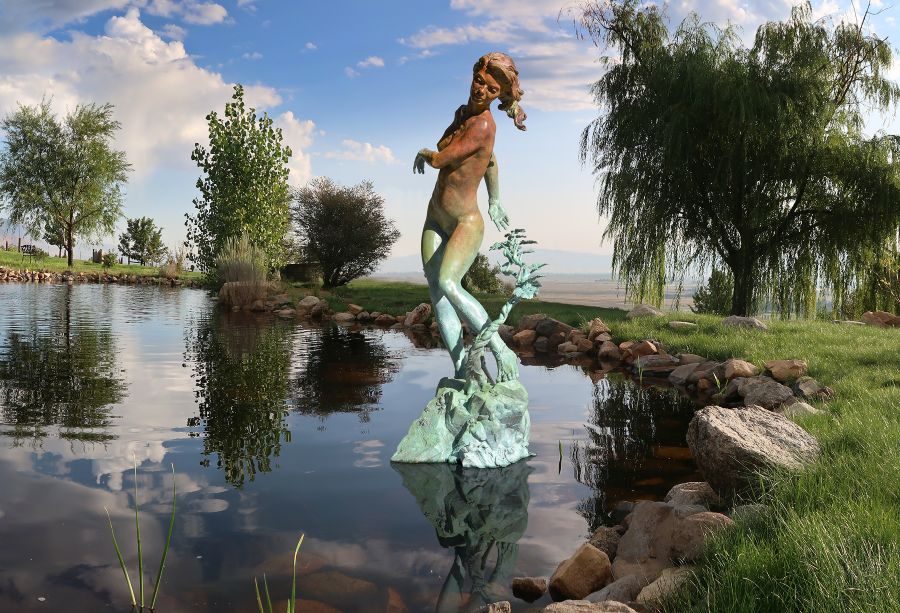
Urinating on bronze statues to jumpstart the uric acid-triggered, blue-green patina process may seem crazy to us today, but it was good enough for the Romans and even Auguste Rodin. Have you ever employed that strategy? Are there any other safer DIY patina alternatives that may be perceived as less icky?
COLIN: We pee on all of our bronze sculptures. Well actually, no…but I love your vision of a simpler time. One historic reference suggests that the urine from a redheaded Egyptian boy is the ultimate patina solution. I’m neither a redhead, nor an Egyptian, nor young enough to be referred to as a boy. Still, I tried it, and nope, it didn’t work. Even my two patina artists have tried this technique, to no avail. Maybe it’s like peeing on a jellyfish sting. It doesn’t work, but people still give it a shot.
What would occur to a sculpture as the decades and centuries progress is what we achieve by applying patinas. We favor using traditional patinas that are derived from naturally occurring minerals rather than pigments. Cupric is copper and gives us wonderful greens and blues. Ferric is iron-based and gives us cool through warm browns, rusts, and reds. Iron oxide (iron + oxygen = rust) can give us ochers, umbers, and a great black. We use liver of sulfur or sulfurated potash as a great substitute for that elusive redheaded Egyptian boy.
Can a sculptor just allow their tools and the creative muse to steer them in unexpected, aesthetically adventurous directions (without fiscal regrets)? Or, is pre-sketching every last detail of a sculpture’s ornamental elements absolutely imperative?
COLIN: You absolutely must follow the rule book. But wait a minute, the core creed of the artist is that there is no rulebook! That means we get to do what we want – wooo hooooo! Actually, we rarely create sketches for sculptures. Even with my paintings, I create very few simple sketches. I prefer saving my energy, focus and enthusiasm for the creation of the final piece.
More often than not, it’s just an idea in our heads. We run with it until we bring it into reality. I enjoy letting the tools and the feel of the clay lead me. I’ll try something and see how it looks, how it works and how it feels. Then I will smear it out and try again, often over and over. At some point, it starts to sing – that’s how I know I’m heading down the right path.
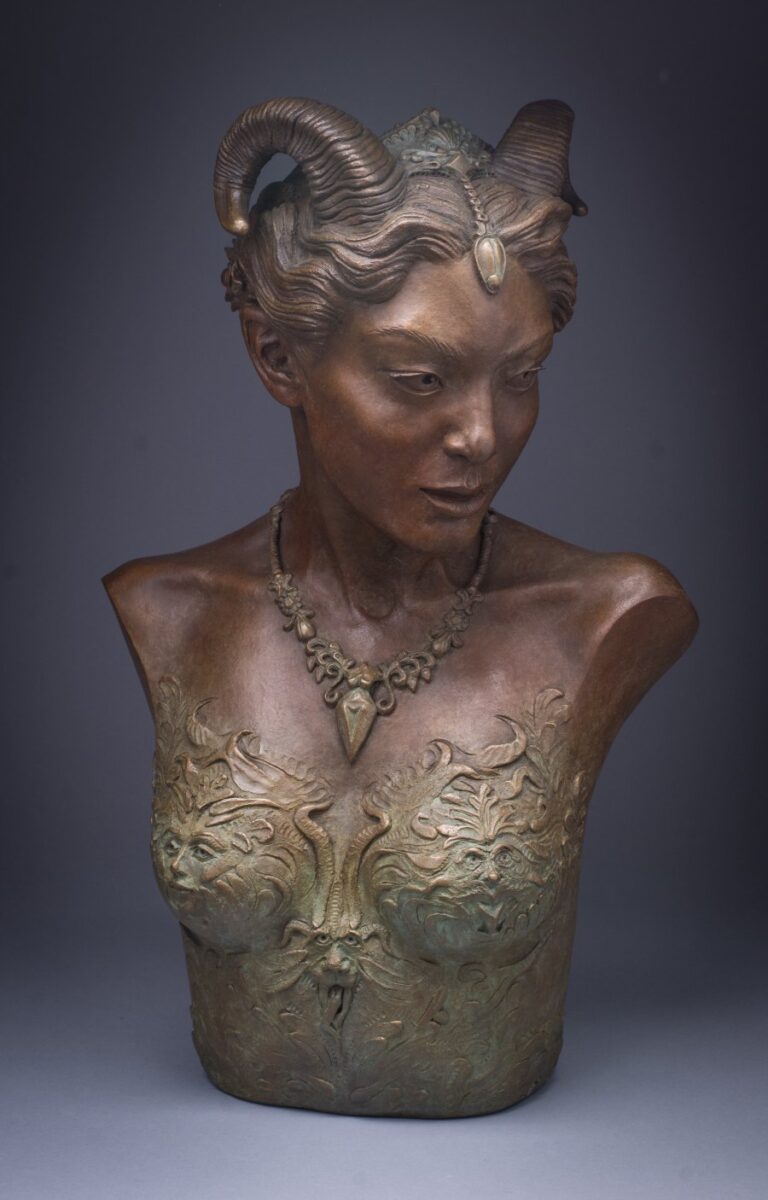
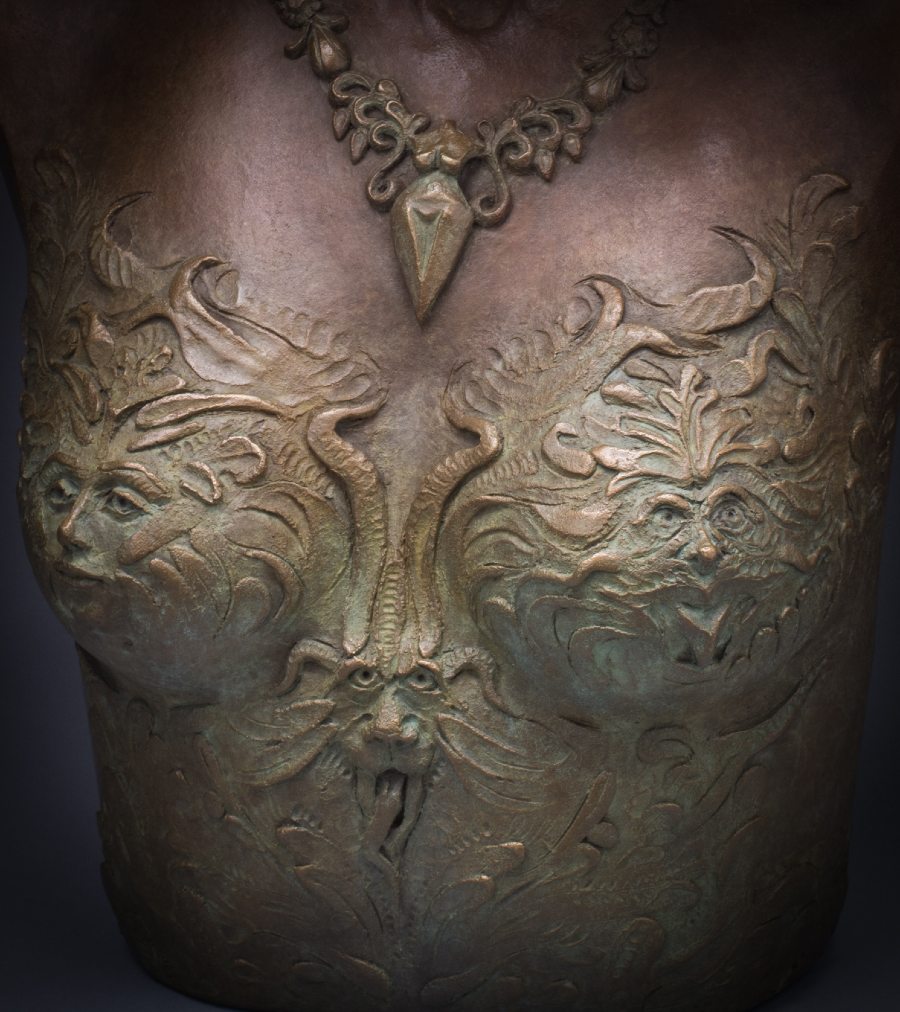
As creatives, we need to apply the full force of our creative vigor to fashion a life that sustains, enlivens and pushes us forward.
– Kristine
Colin, you were the brainchild behind the face-festooned breasts of your collaborative bronze sculpture, Ktisis: The Muse of Creativity. How did that idea manifest?
COLIN: We had recently been to The Wallace Collection in London. The masterful silversmithing on the decorative arts and in the armory played wonderfully in my memories. The overall sense of glorious embellishments set the stage for my approach to Ktisis. I wanted to create something a bit ambiguous that expanded on the story of the Muse of Creativity. Is it part of her? Is it something that she’s wearing, such as ornamentation or armor? I gave the sculpture room to grow in my hands.
Have you ever wondered if maybe the muse you were bringing to life had some mystical role in the evolution of her own mammary aesthetic?
KRISTINE: Absolutely! I had progressed pretty far on Ktisis’ torso and head when Colin walked by. I remember exclaiming, “I cannot wait for you to work on this girl! She talks to you the whole time!” So, yes, I think she was in some way guiding our creative choices from the get-go.
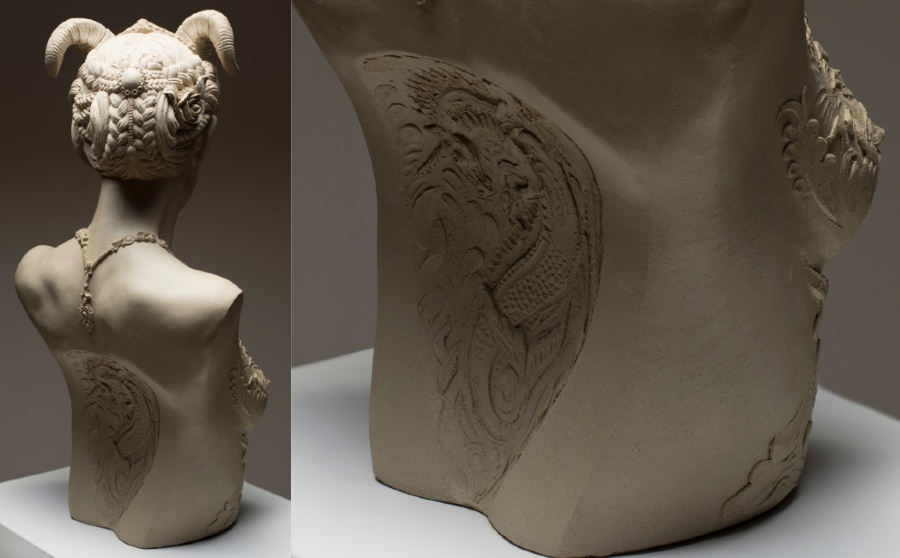
Despite Ktisis’ mid-torso face mischievously flapping her tongue at the beholder, her bustier-armor seems dead-serious. It brings to mind the transformative wardrobe choice of a superhero. Was her neck-down ornamentation meant to convey the notion of an emboldened creative muse who could slay all day?
KRISTINE: We use our imaginations and skills to bring a sculpture to life. Part of the pleasure of the artistic process, though, is the unique experience that each viewer has when they look at our art. It is informed by one’s own imagination and perception. A sculpture can have as many lives and interpretations as there are viewers willing to dance.
Think back to the collaborative sculptures that the two of you worked on a decade ago. Are they as rich in detail and complexity as your 2020 efforts?
KRISTINE: Each of us has our own individual bodies of work. Creatively, we can “wander off” to explore techniques, discover answers, and find new directions that are personally inspiring. We then bring that back into our partnership, which keeps things exciting and new.
There are undercurrents that wind through all of our works, such as mythology, imagination, inspiration. Our early works were often more grand in scale – and technically more complicated – but simpler in surface manipulation. The artwork we’ve been exposed to over the years has challenged us to imbue each new work with an increasingly more elaborate aesthetic. Our recent interests have developed to include a fuller exploration of the possibilities of sculptural narrative.
You’ve said that your artistic union yields work that is “better than what we could have created individually”. Why continue pursuing individual creative projects, then?
KRISTINE: Hmmm…touché! We love working together but we also love creating our own individual bodies of work. It’s like a feast, and we are gluttons. We have similar aesthetic sensibilities and a fair amount of overlap in our creative interests. Still, each of us occasionally explores concepts that aren’t as intriguing to our partner.
I often feel compelled to create works based in sociocultural commentary and women’s experiences. I have a strong interest in exploring the power that words have to create and define the realities that we live in. Colin is engaged in writing his own mythology and in creating works based on those stories.
While we’re interested in supporting each other’s individual artistic passions, we’re not necessarily drawn to participate fully in the creation of those works. Still, we typically do dabble in everything that is created in our studio. Even within our individual bodies of work, we invariably find ourselves participating in some part of the other’s creative process. In these cases, one of us the principal and the other is more of a helper bee.
Your lives are built around the discussion and creation of art. Your dining room-free, living room-free, television-free adobe home is an all-art-all-of-the-time space that accommodates a gallery and work studio. In spite of your very conducive art-centric environment, have either of you encountered a wicked creative block?
KRISTINE: Usually, when I’m finishing one sculpture, I’m already contemplating what the next one or two or ten sculptures will be. I have a collection of muse cues – inspirational images, words, ideas, visions – that help me to maintain my artistic drive. I’ve certainly experienced motivation blocks, though, particularly when I’m going through the “terrible twos” on a sculpture. When my creative mind refuses to focus, I engage in the mundane, repetitive art studio tasks that must be done, such as chasing bronzes or waxes.
COLIN: Each of us has an endless ongoing mental list of ideas that we would love to bring to life. I’ve written down myriad project ideas, too. In fact, I have a stack of six notepads as well as a pile of notations on random pages right next to me! I also maintain an “ideas/inspiration” file where jewels lie in wait. Sometimes I think one’s creative space is more about focusing on priorities and allowing the muse enough room to dance.
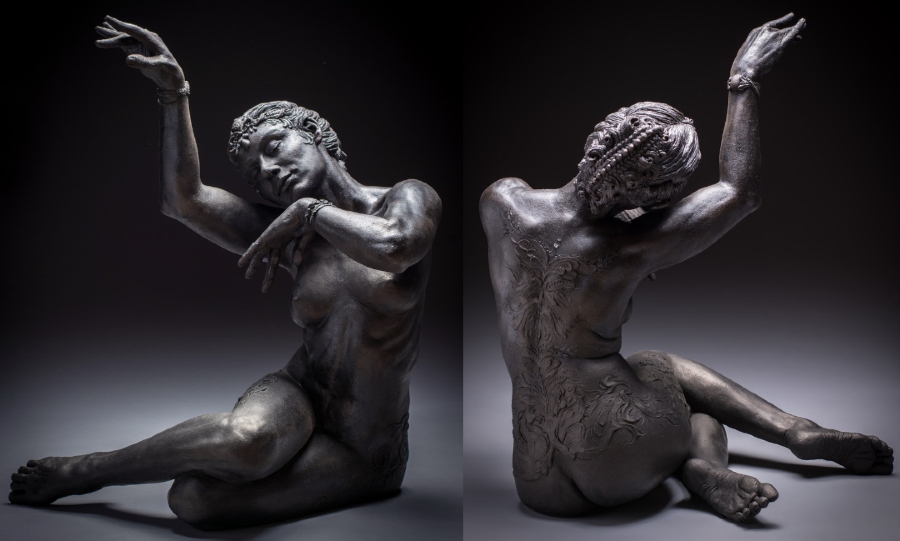
You are both deeply invested in your art-on-the-brain lifestyle, often spending nearly 2/3 of each day working. Does the “all work and no play” proverb ever ring true within your lives?
COLIN: Yes, we work every day of the week, but since creating art is play for us, the proverb doesn’t really apply. I must concede that we may be dull as a soup spoon. A great day in the studio is truly marvelous, though. Even when a project is fraught with challenges, creating art is – for us – exciting and rejuvenating.
KRISTINE: Yes, most of the time we work weekends. I perpetually feel Annie Dillard’s words nipping at my heels: “How we spend our days, is, of course, how we spend our lives.” Time goes by in an instant and we feel a constant push to squeeze in as much creativity as we can. Given the absolute freedom to do anything that I wanted, I probably wouldn’t be doing anything different than what we currently do.
Creativity is always enlivening. I will never tire of watching a sculpture emerge from the formlessness of clay. Bringing something into being is what makes me feel most connected to who I am and what my purpose is. I love seeing my vision manifest in the concrete world.
A sculpture can have as many lives and interpretations as there are viewers willing to dance.
– Kristine
Are you both ensconced in such an intense art-producing bubble that you easily lose track of time? Or you forget to eat?
KRISTINE: Ha! We’re both good eaters! Colin, if left to his own devices might forget to eat until he passed out with hunger, but me, never. I do find that the days always go quicker than I imagine they will, though.
At what point in your relationship did you land upon your creative collaboration groove? Was it a “practice makes perfect” evolution?
COLIN: It was perfect from the beginning, just like Kristine. We slipped into the groove and it was meant to be.
KRISTINE: Shortly after we met, Colin asked me if I wanted to spend my life with him. I said yes. He asked, “No hesitations?” I said, “No hesitations!”
Collaborating on artwork was a natural development of our “no hesitations” approach to our life together. We never talked about it, we just dove in. With us, everything has always developed organically. Blending our skill sets and combining our creative impulses is a natural offshoot of who we are together. Admittedly, some of our project approaches may have existed in the “practice makes perfect” realm. I’d have to say that honestly – for me – the collaboration has been perfect from the start.
Imagine each of you proclaiming to your beloved, “Let’s launch a collaborative, anatomically correct pet rock sculpture series!” What would your partner’s reaction be to your new idea?
COLIN: Kristine would probably say, “Why?”
(KRISTINE’S NOTE: “Why?” and “What if?” are my favorite questions in the whole world. They come tripping out of my mouth a ridiculous number of times each day. My dad used to call me his “little question box” when I was a child.)
KRISTINE: Colin would first sit quietly and listen to me describe the series in excruciatingly lengthy detail. Then he’d say, “Oh wait! Were you talking to me?” After that, he’d ask, “So how heavy is it going to be? Are we going to have to hang it from a 40 foot ceiling?”
In truth, he’d say, “Yeah!!! And then, we could…!” and we’d be off and running on a new creative adventure together.
(COLIN’S NOTE: Yup, on the button!)
You must like each other an awful lot to share the same profession, the same work space, and in some cases even the same sculptures! Even the most zealous chocoholics admit, however, that occasionally they just need to step away from the bean. Has that ever been your experience? This art affair of yours is making us a little green with envy 😉
COLIN: I love every moment of this feast.
KRISTINE: Prior to meeting Colin and launching this most wonderful adventure we’ve been living, I experienced my fair share of ups and downs in life. I made decisions that didn’t pan out, pursued ventures that flopped, and relationships that didn’t enliven. All of those experiences only contributed to me becoming who I am. They made me all the more grateful and joyful when I found Colin. We’ve known from the beginning of our time together that no matter how long we have, it will never be enough. And at the end of it all, there will still be unfinished conversations yet to be had.

